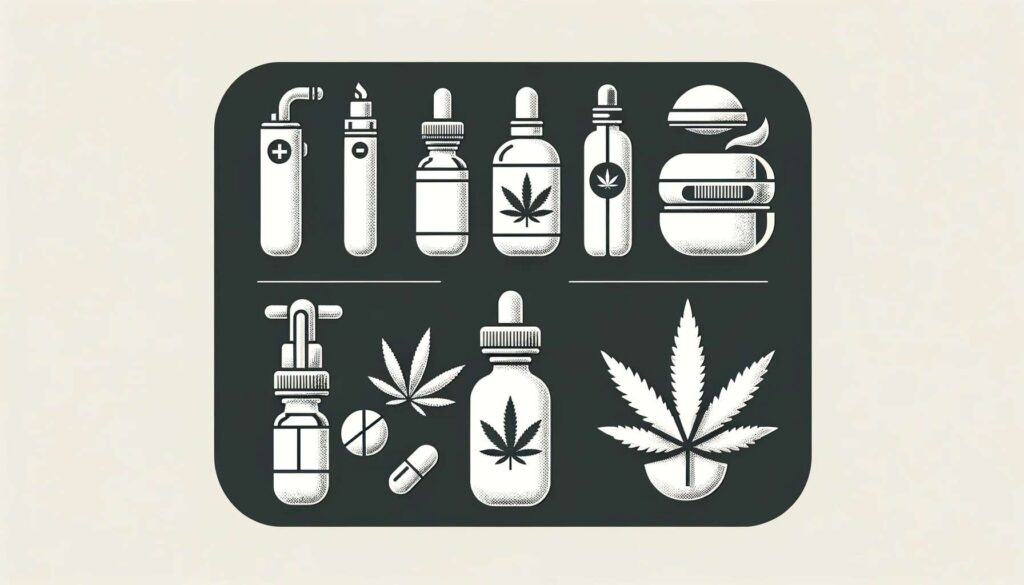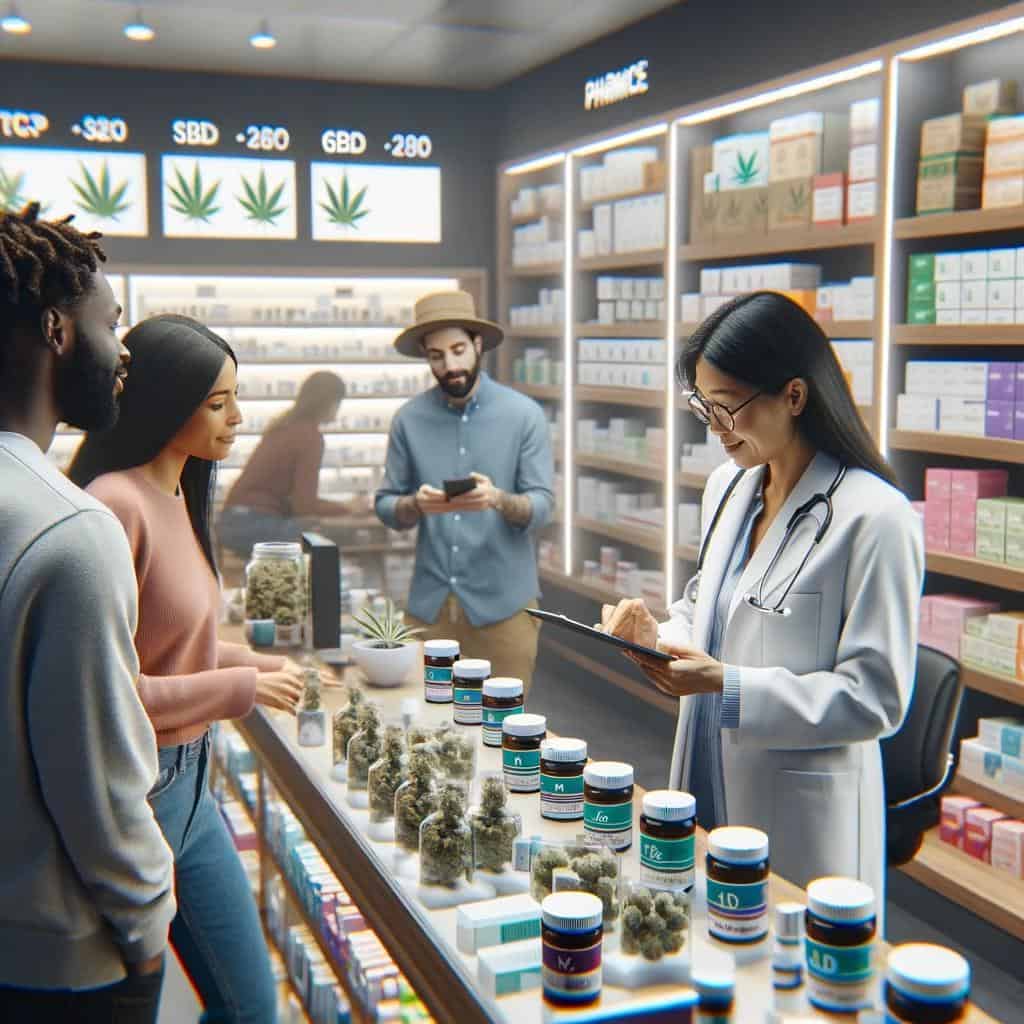- [email protected]
- (619) 304-4004
Discover the regulated world of medical marijuana in New York with our blog. It delves into safe consumption methods, legal guidelines, and the state’s commitment to public health and social equity. A must-read for patients and caregivers seeking informed insights into medical marijuana use in New York.
Medical Marijuana in New York

In New York, the Office of Cannabis Management regulates medical marijuana, balancing public health, social justice, and economic development. This comprehensive framework ensures product safety and responsible use, with a focus on communities previously impacted by prohibition policies.
The state’s approach includes strict standards for production, testing, and distribution, promoting safer consumption methods. This blog explores the various ways medical marijuana can be consumed in New York, providing insights into legal considerations, benefits, and safety guidelines.
It’s an essential read for patients, caregivers, and anyone interested in understanding how medical marijuana is integrated into New York’s healthcare and lifestyle, offering a well-rounded perspective on responsible and informed usage.
The way medical marijuana is consumed can significantly affect its efficacy and the experience of the user. With various methods available, ranging from inhalation to oral consumption, and topical applications, each offers distinct advantages and considerations. This part of the introduction will emphasize the importance of understanding these different consumption methods.
It will set the stage for a deeper exploration into how each method works, its suitability for different medical conditions, and the legal and health implications in the context of New York’s medical marijuana program.
This knowledge is vital for patients, caregivers, and healthcare professionals to make informed decisions and optimize treatment outcomes.
Inhalation methods are among the most common ways of consuming medical marijuana, offering quick onset of effects and ease of dosage control.
This category primarily includes smoking and vaporizing, each with its unique characteristics and implications for medical use.
Both methods have their advantages and considerations, and the choice largely depends on the patient’s preferences, medical needs, and MMJ recommendations from medical marijuana doctors in New York.
Understanding these inhalation methods is key for patients in New York to effectively manage their symptoms and conditions with medical marijuana.
Smoking medical marijuana is a widely used method due to its rapid onset of effects. When patients smoke cannabis, the active compounds, including THC and CBD, are quickly absorbed into the bloodstream through the lungs, providing almost immediate relief from symptoms such as pain, nausea, or anxiety. This immediacy can be particularly beneficial for patients needing swift symptom management.
However, smoking medical marijuana also has its drawbacks. The combustion of plant material can produce harmful byproducts, which may pose respiratory risks, especially with long-term use.
Patients with pre-existing lung conditions or those concerned about respiratory health might need to consider these factors.
Additionally, the dosage can be harder to control with smoking, potentially leading to variability in the effects experienced by the patient.
Vaporizing, or vaping, offers several benefits over traditional smoking, making it a preferred method for many medical marijuana patients. The key advantages include:
Both smoking and vaporizing have unique impacts and benefits for medical marijuana patients. The choice between them should be based on individual health needs, preferences, and the advice of healthcare professionals.
Oral methods of consuming medical marijuana involve ingesting cannabis products, which are processed through the digestive system and liver before entering the bloodstream. This category includes a variety of forms such as edibles, capsules, tinctures, and oils.
Each offers distinct characteristics in terms of onset, duration, and intensity of effects.
Oral consumption methods are often preferred by patients seeking long-lasting relief, consistent dosing, and a smoke-free option. They are particularly suitable for chronic conditions, pain management, and when a discrete method of consumption is desired.
However, due to the delayed onset and variability in individual digestion, patients are advised to start with a low dose and wait to understand the full effects before consuming more.
Edibles are a popular and discreet way to consume medical marijuana. They come in various forms, including baked goods, candies, and chocolates, all infused with cannabis extracts. The primary advantage of edibles is their ability to provide long-lasting effects, making them ideal for chronic conditions that require sustained relief.
When consumed, the active compounds in edibles are metabolized in the liver, transforming THC into a more potent compound, which results in a more intense and extended effect compared to inhalation methods.
This process, however, also means that the onset of effects is slower, typically taking 30 minutes to 2 hours. This delayed onset requires careful dosing, as it can be easy to consume too much before the full effects are felt.
Edibles offer a smoke-free alternative, beneficial for those who prefer not to inhale or have respiratory issues. They also provide a consistent dosage, which is crucial for patients who need to manage their intake precisely. However, the effects of edibles can vary based on factors like individual metabolism, the amount consumed, and the concentration of THC and CBD in the product.
Tinctures and oils are concentrated forms of cannabis that are typically taken orally or sublingually (under the tongue). The sublingual method allows for quicker absorption into the bloodstream, offering a faster onset of effects compared to edibles, usually within 15 to 45 minutes.
Tinctures are alcohol-based cannabis extracts, while oils are made with either oil-based or alcohol-based extraction methods. Both are known for their precise dosing, as they often come with droppers or syringes. This precision allows patients to adjust their dosage based on their specific needs and the desired effects.
The effects of tinctures and oils can range from relaxation and pain relief to reducing anxiety and managing symptoms of various medical conditions. Since they are processed differently than edibles, the effects are usually less intense but still provide significant therapeutic benefits.
These methods are particularly useful for those who need quick relief but want to avoid the potential respiratory risks associated with smoking or vaping.
Medical marijuana beverages are a growing category in the cannabis market, offering an alternative to traditional edibles. Like edibles, these beverages are ingested and processed through the digestive system, but they often have a quicker onset of effects compared to solid edibles. This is due to the liquid form, which can be absorbed more quickly by the body.
The experience of consuming cannabis-infused beverages can be different from edibles in terms of how quickly the effects are felt and how long they last. Beverages may offer a more manageable and predictable experience, making them suitable for those new to cannabis or looking for a controlled way to consume.
Additionally, cannabis beverages come in various flavors and formulations, providing a more enjoyable and personalized consumption experience. They are also a discreet and socially acceptable way to consume cannabis, resembling regular beverages.
In context, medical marijuana beverages offer an alternative to traditional edibles with potentially quicker onset times and a more controlled experience, appealing to a wide range of patients with different preferences and needs.

Topical applications of medical marijuana involve products that are applied directly to the skin. This category includes creams, balms, lotions, and transdermal patches. Topicals are particularly favored for localized relief of pain, inflammation, and skin conditions.
They are distinct from other consumption methods in several key ways:
Topical applications are a valuable option in the medical marijuana repertoire, offering patient-specific solutions for pain and skin-related conditions without systemic effects.
They are particularly beneficial for those who prefer localized treatment or wish to avoid the psychoactive effects of other consumption methods.
Topical medical marijuana products can be particularly beneficial for a variety of patients, each with specific health needs and conditions:
Topical methods are preferred by some patients due to several key advantages:
Topical medical marijuana products cater to a wide range of needs and preferences, offering effective relief with minimal systemic effects and high user-friendliness, making them a preferred choice for many patients.
Topical medical marijuana products have gained popularity in New York for several reasons, reflecting the unique needs and preferences of patients in the state:
The popularity of topical medical marijuana products in New York is a reflection of their ability to provide effective, targeted, and discreet relief, aligning with the lifestyle, legal framework, and the diverse needs of patients in the state.
Sublingual methods of consuming medical marijuana involve placing the product under the tongue, where it is absorbed directly into the bloodstream through the mucous membranes. This category primarily includes tinctures and dissolvable strips.
Sublingual administration offers unique benefits and is distinct from other consumption methods in several ways:
Sublingual methods are particularly favored by patients who seek a balance between rapid onset and sustained effects, require precise dosing, and prefer a discreet and lung-friendly method of consumption.
They are an effective option for a wide range of medical conditions and are well-suited to the needs of many patients in New York’s medical marijuana program.
Sublingual strips are a novel and efficient method for consuming medical marijuana. These thin, paper-like strips are placed under the tongue, where they quickly dissolve and deliver cannabis compounds directly into the bloodstream.
Here’s how they work:
Sublingual methods, including tinctures and strips, offer unique benefits in the consumption of medical marijuana:
Sublingual methods stand out in medical marijuana use for their rapid yet sustained effects, precise dosing, and ease of use, making them a preferred choice for many patients seeking effective symptom management.
Sublingual consumption of medical marijuana offers several advantages that make it a preferred method for many patients:
In New York, medical marijuana patients have access to a variety of sublingual products, tailored to meet diverse needs and preferences:
Each of these products is designed to offer the therapeutic benefits of cannabis in a form that is easy to administer, with rapid absorption and consistent dosing.
Patients in New York can choose from these options based on their specific treatment needs, lifestyle, and personal preferences.
When it comes to selecting a method for consuming medical marijuana, several factors play a crucial role in influencing a patient’s decision.
Understanding these factors can help patients and healthcare providers determine the most suitable consumption method for individual needs and circumstances:
By considering these factors, patients in New York can make informed decisions about their medical marijuana consumption methods, ensuring they choose the option that best aligns with their medical needs, lifestyle, and personal preferences.
Personal health conditions play a significant role in determining the most appropriate method of consuming medical marijuana. Each patient’s unique health profile can influence the effectiveness and suitability of different consumption methods:
The method of consumption is crucial for treatment efficacy in medical marijuana use for several reasons:
The choice of consumption method is a critical component of effective medical marijuana treatment, as it directly impacts how the body absorbs and responds to cannabinoids, the accuracy of dosing, and the patient’s overall experience and compliance with the treatment regimen.
Navigating the legal and safety aspects of medical marijuana consumption in New York is crucial for patients, caregivers, and healthcare providers. Understanding these considerations ensures compliance with state laws and maximizes the safety and efficacy of treatment.
By adhering to these legal and safety considerations, patients in New York can responsibly and effectively incorporate medical marijuana into their treatment plans, ensuring they remain within the legal framework while optimizing the therapeutic benefits of their cannabis-based treatments.
In New York, the legal framework governing medical marijuana includes specific restrictions on consumption methods to ensure safety and compliance:
Safe storage and usage of medical marijuana are vital for patient safety and to ensure the integrity of the medication:
By following these guidelines, patients can safely store and use medical marijuana, ensuring they gain the maximum therapeutic benefits while minimizing risks and staying compliant with New York’s legal regulations.
In New York, the public consumption of medical marijuana is generally restricted. The state’s laws typically require patients to consume their medication in private settings. Public use, especially in places where tobacco smoking is prohibited, can lead to legal issues.
Patients are advised to be discreet and aware of their surroundings when consuming medical marijuana, prioritizing private spaces for consumption to stay within legal boundaries.
Patients in New York can obtain information about safe consumption practices from several reliable sources:
First-time medical marijuana users in New York should be aware of the following:
Tourists in New York are not typically allowed to purchase medical marijuana unless they are part of a state program that has a reciprocity agreement with New York. Most states, including New York, require patients to be residents and registered in their medical marijuana program. Tourists with medical marijuana prescriptions from other states should research New York’s reciprocity policies and consider alternative legal options for managing their conditions while visiting.
In New York, the legal consumption of medical marijuana is generally restricted to private residences. Public consumption, similar to smoking tobacco, is often prohibited, especially in public spaces like parks, streets, or areas where tobacco smoking is banned. Patients are advised to consume their medication discreetly and in private settings to comply with state laws and avoid legal issues.
In New York, medical marijuana can be prescribed to patients of all ages, including minors. However, patients under the age of 18 require a designated caregiver to manage their medical marijuana use. This caregiver must be a legal adult and is typically a parent or guardian who is responsible for obtaining and administering the marijuana in accordance with the patient’s healthcare provider’s recommendations.
To ensure safe consumption of medical marijuana, patients should:
In New York, patients registered in the medical marijuana program are typically allowed to possess a 30-day supply of medical marijuana, as determined by their healthcare provider. The exact amount can vary based on the individual’s prescription and medical needs. It’s important for patients to be aware of their prescribed limits to remain compliant with state regulations.
Yes, there are restrictions on the types of medical marijuana products available in New York. The state’s medical marijuana program regulates the forms of marijuana that can be sold and used. Initially, the program did not permit the sale of smokable forms of marijuana, focusing instead on extracts, tinctures, oils, capsules, and topicals. However, regulations can change, so patients should stay informed about the current list of approved product types. Additionally, the potency and composition of these products are regulated to ensure patient safety and product consistency.
In New York, the medical marijuana landscape offers a variety of consumption methods, each tailored to meet different patient needs. From inhalation techniques like smoking and vaporizing for quick symptom relief to oral options such as edibles and tinctures for prolonged effects, the choice is crucial for effective treatment.
Topicals and sublingual methods provide targeted relief and a balance between rapid onset and sustained impact. Patients must navigate these choices while adhering to New York’s legal framework, which includes private consumption, adherence to possession limits, and using state-approved products. Safe usage practices, correct storage, and understanding dosages are key to maximizing medical marijuana’s benefits.
Whether a novice or experienced user, consulting healthcare providers and staying updated on the state’s medical marijuana program is essential. As this landscape evolves, it offers patients opportunities to find the most suitable methods for their treatment, ensuring responsible and beneficial use of medical marijuana in New York.
https://cannabis.ny.gov/patients
https://www.mpp.org/states/new-york/
https://norml.org/laws/new-york-penalties-2/
https://cannabis.ny.gov/practitioners
https://cannabis.ny.gov/medical-cannabis
https://cannabis.ny.gov/medical-cannabis-program-faqs

A1 Marijuana Doctors is an online platform, that connects marijuana patients to marijuana doctors in their state.

A1 Marijuana doctors is an online platform that connects medical patients to medical marijuana doctors. We offer a quick & easy way to apply for a medical marijuana card in all legal states.
Social Links
Contact Us
Quick Links
Trusted By




This website does not sell medicine nor controlled substances. It is a network of doctors & nurse practitioners, not a pharmacy / dispensary.
Copyright ©2023 A1 Marijuana Doctors. All rights reserved.